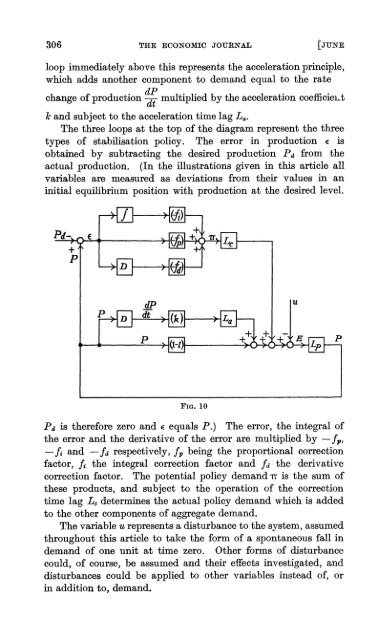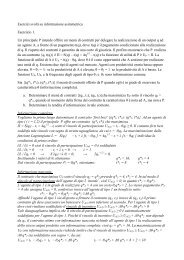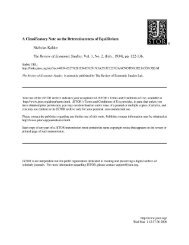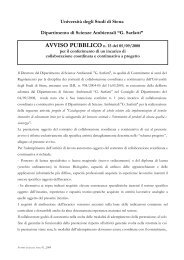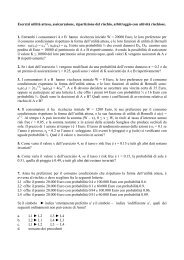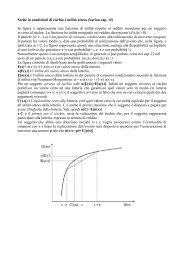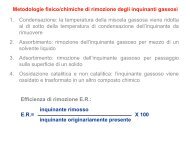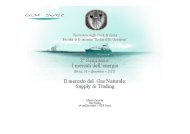Stabilisation Policy in a Closed Economy Author(s): A. W. Phillips ...
Stabilisation Policy in a Closed Economy Author(s): A. W. Phillips ...
Stabilisation Policy in a Closed Economy Author(s): A. W. Phillips ...
You also want an ePaper? Increase the reach of your titles
YUMPU automatically turns print PDFs into web optimized ePapers that Google loves.
306 THE ECONOMIC JOTJZRNAL [JUNE<br />
loop immediately above this represents the acceleration pr<strong>in</strong>ciple,<br />
which adds another component to demand equal to the rate<br />
change of production dt- multiplied by the acceleration coefficiei.t<br />
k and subject to the acceleration time lag La.<br />
The three loops at the top of the diagram represent the three<br />
types of stabilisation policy. The error <strong>in</strong> production E is<br />
obta<strong>in</strong>ed by subtract<strong>in</strong>g the desired production Pd from the<br />
actual production. (In the illustrations given <strong>in</strong> this article all<br />
variables are measured as deviations from their values <strong>in</strong> an<br />
<strong>in</strong>itial equilibriunm position with production at the desired level.<br />
Pd-~<br />
Pt_<br />
dP<br />
D d (k La<br />
P ++<br />
FIG. 10<br />
+? +E<br />
Pd is therefore zero and e equals P.) The error, the <strong>in</strong>tegral of<br />
the error and the derivative of the error are multiplied by-fp,<br />
- fi and - fd respectively, fp. be<strong>in</strong>g the proportional correction<br />
factor, fi the <strong>in</strong>tegral correction factor and fd the derivative<br />
correction factor. The potential policy demand - is the sum of<br />
these products, and subject to the operation of the correction<br />
time lag L, determ<strong>in</strong>es the actual policy demand which is added<br />
to the other components of aggregate demand.<br />
The variable u represents a disturbance to the system, assumed<br />
throughout this article to take the form of a spontaneous fall <strong>in</strong><br />
demand of one unit at time zero. Other forms of disturbance<br />
could, of course, be assumed and their effects <strong>in</strong>vestigated, and<br />
disturbances could be applied to other variables <strong>in</strong>stead of, or<br />
<strong>in</strong> addition to, demand.<br />
u<br />
P<br />
1p


